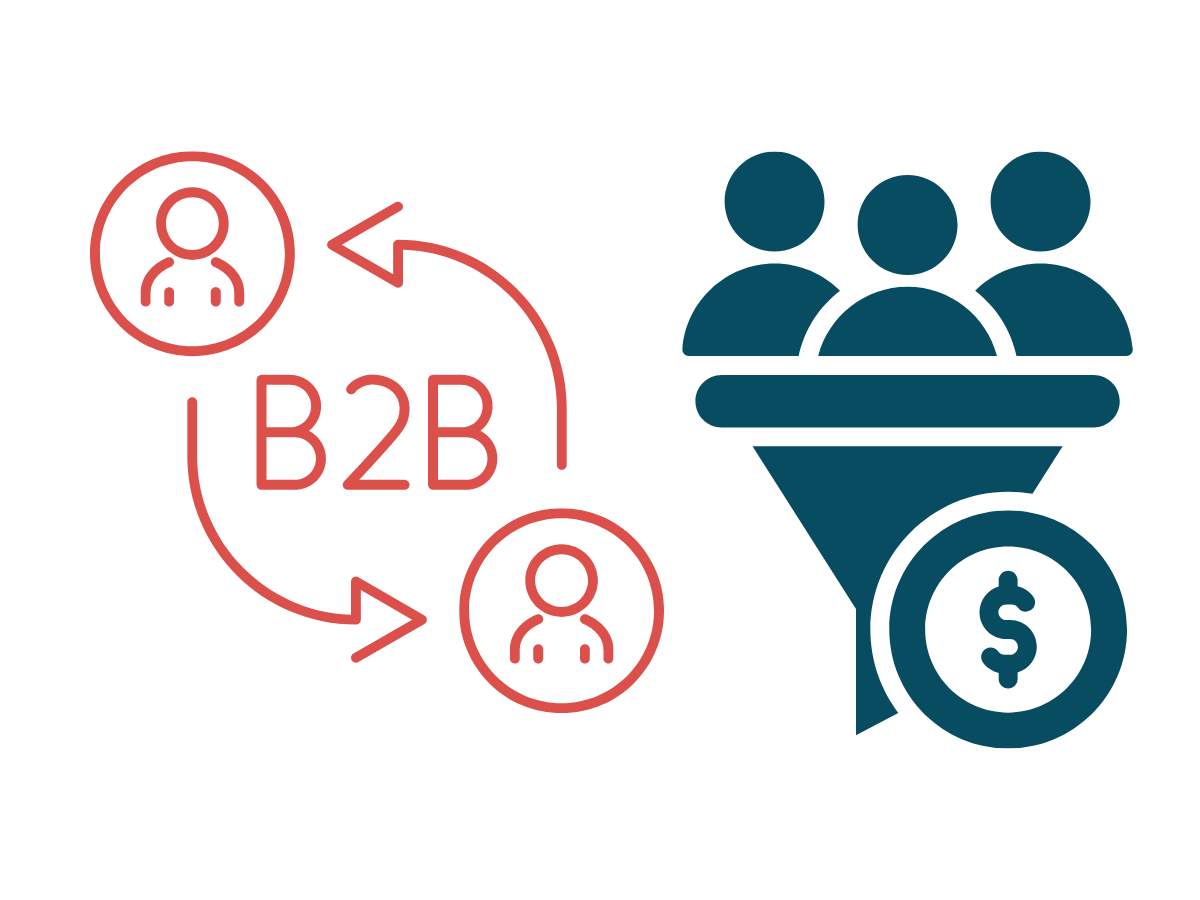In the world of B2B marketing, LinkedIn stands out as a powerhouse platform for lead generation. With over 700 million professionals and a robust suite of tools tailored for business networking, it's no wonder that savvy marketers turn to LinkedIn to connect with potential clients and partners. If you're looking to maximize your B2B lead generation efforts, this comprehensive guide will walk you through the steps to leverage LinkedIn effectively.
Optimizing Your LinkedIn Profile and Company Page
Profile Optimization
First impressions matter, especially on LinkedIn. Your profile is your digital handshake, and it needs to be strong, professional, and engaging. Here are a few steps to get you started:
- Professional Photo: Use a high-quality, professional headshot. Profiles with photos get 21 times more views and 36 times more messages.
- Compelling Headline: Your headline should not just be your job title. Think of it as your tagline – something that summarizes who you are and what you offer.
- Detailed Summary: Craft a detailed and engaging summary. This is your elevator pitch. Highlight your expertise, experience, and what makes you unique.
- Experience and Skills: Make sure your experience section is complete and showcases your achievements. Endorsements and recommendations add credibility.
Company Page Setup
Your LinkedIn Company Page is an extension of your brand. It's a place where potential clients can learn about your business, its culture, and its offerings. Here’s how to make it shine:
- Complete Profile: Ensure all sections of your company page are filled out – from the overview to the specialties.
- Thought Leadership Content: Regularly post content that showcases your industry expertise. This can be blog posts, videos, infographics, or curated articles.
- Engagement: Engage with your followers by responding to comments and messages. This builds a sense of community and trust.
Content Strategy for LinkedIn
Types of Content
Content is king, even on LinkedIn. The types of content you share can significantly impact your engagement rates. Here’s what to consider:
- Blog Posts: Share insightful articles that provide value to your audience. This positions you as a thought leader.
- Videos: Videos are highly engaging and can be a great way to showcase your expertise or provide how-to guides.
- Infographics: Visual content like infographics can simplify complex information and make it more digestible.
- Case Studies: Share success stories that highlight how your product or service has helped other businesses.
Posting Frequency and Engagement
Consistency is key. Posting regularly keeps you on top of your audience’s mind. However, it’s not just about posting frequently, but also about engaging with your audience:
- Regular Posts: Aim to post at least three times a week. This keeps your content fresh and your audience engaged.
- Engage with Comments: Don’t just post and forget. Engage with the comments on your posts. This builds relationships and shows that you value your audience’s input.
- LinkedIn Articles and Pulse: Use LinkedIn’s native publishing platform to share longer articles. This can significantly boost your visibility and credibility.
Leveraging LinkedIn Groups and Communities
Joining Relevant Groups
LinkedIn Groups are a goldmine for connecting with like-minded professionals and potential clients. Here’s how to make the most of them:
- Find the Right Groups: Join groups that are relevant to your industry and interests.
- Active Participation: Be an active participant. Share insights, ask questions, and contribute to discussions. This can help you build authority and connect with potential leads.
Engagement in Groups
Engaging in groups isn’t just about joining them; it’s about being a valuable member:
- Share Valuable Content: Regularly share content that is relevant to the group. This can be your own articles or curated content.
- Start Discussions: Initiate conversations around hot topics in your industry. This can spark engagement and position you as a thought leader.
- Respond to Others: Engage with other members’ posts. This builds relationships and can lead to potential leads noticing you.
Advanced LinkedIn Features and Tools
LinkedIn Sales Navigator
Sales Navigator is a powerful tool for B2B marketers. It allows you to find and connect with the right prospects. Here are its key features:
- Advanced Search Filters: Use advanced filters to find prospects based on industry, company size, job title, and more.
- Lead Recommendations: Get lead recommendations based on your preferences.
- InMail Messages: Send direct messages to prospects even if you’re not connected.
LinkedIn Lead Gen Forms
Lead Gen Forms simplify the process of capturing leads directly on LinkedIn:
- Auto-Fill Information: These forms auto-fill with users’ LinkedIn profile data, making it easier for them to submit their information.
- Integration with CRM: Sync the collected data with your CRM for seamless follow-up.
Advertising on LinkedIn
Sponsored Content and Ads
LinkedIn’s advertising platform offers several options to promote your content:
- Sponsored Content: Promote your best-performing posts to reach a wider audience.
- InMail Ads: Send personalized messages directly to your target audience’s inbox.
- Carousel Ads: Showcase multiple products or services in a single ad.
Targeting Options
One of LinkedIn’s strengths is its targeting capabilities:
- Matched Audiences: Target your ads to a list of companies or contacts.
- Contact Targeting: Engage with known contacts at your target accounts.
- Account-Based Marketing: Focus your efforts on high-value accounts for better ROI.
Case Studies
Real-world examples can illustrate the effectiveness of LinkedIn ads:
- Financial Services Client: A financial services client who allocated 10% of their LinkedIn budget to account-based outreach saw a 10x return on ad spend compared to broader campaigns.
Account-Based Marketing (ABM) on LinkedIn
What is ABM?
Account-Based Marketing is a targeted approach that focuses on specific accounts rather than a broad audience. This strategy is particularly effective for B2B companies:
- Targeted Outreach: Focus on high-value accounts that are more likely to convert.
- Personalized Campaigns: Create personalized content and campaigns for each account.
Implementing ABM on LinkedIn
Here’s how to use LinkedIn for ABM:
- Identify Key Accounts: Use LinkedIn’s advanced search features to identify high-value accounts.
- Engage with Decision-Makers: Connect and engage with decision-makers at your target accounts.
- Tailored Content: Create and share content that addresses the specific needs and pain points of your target accounts.
Tracking and Analyzing Performance
LinkedIn Analytics
Monitoring your LinkedIn performance is crucial for continuous improvement:
- Monitor Key Metrics: Track metrics like post engagement, follower growth, and lead conversions.
- Content Performance: Analyze which types of content perform best with your audience.
Optimization Based on Data
Use your analytics data to refine your strategy:
- Content Themes: Identify which content themes resonate most with your audience.
- Engagement Tactics: Optimize your engagement tactics based on what drives the most interaction.
Best Practices and Common Pitfalls
Do’s and Don’ts
To wrap up, here are some best practices to keep in mind:
- Be Consistent: Regular posting and engagement are key.
- Provide Value: Always aim to provide value with your content.
- Engage Authentically: Genuine engagement builds trust and relationships.
Avoiding Common Mistakes
Watch out for these common pitfalls:
- Over-Promotion: Don’t just promote your products or services. Provide valuable insights and information.
- Ignoring Analytics: Regularly review your analytics to understand what’s working and what’s not.
- Lack of Engagement: Don’t just post and disappear. Engage with your audience to build relationships.
Conclusion
Leveraging LinkedIn for B2B lead generation is a strategic process that involves optimizing your profile and company page, creating valuable content, engaging with groups, utilizing advanced features, and monitoring performance. By following these steps and continuously refining your approach based on data, you can effectively generate high-quality leads on LinkedIn. So, start implementing these strategies today and watch your network and business grow!


